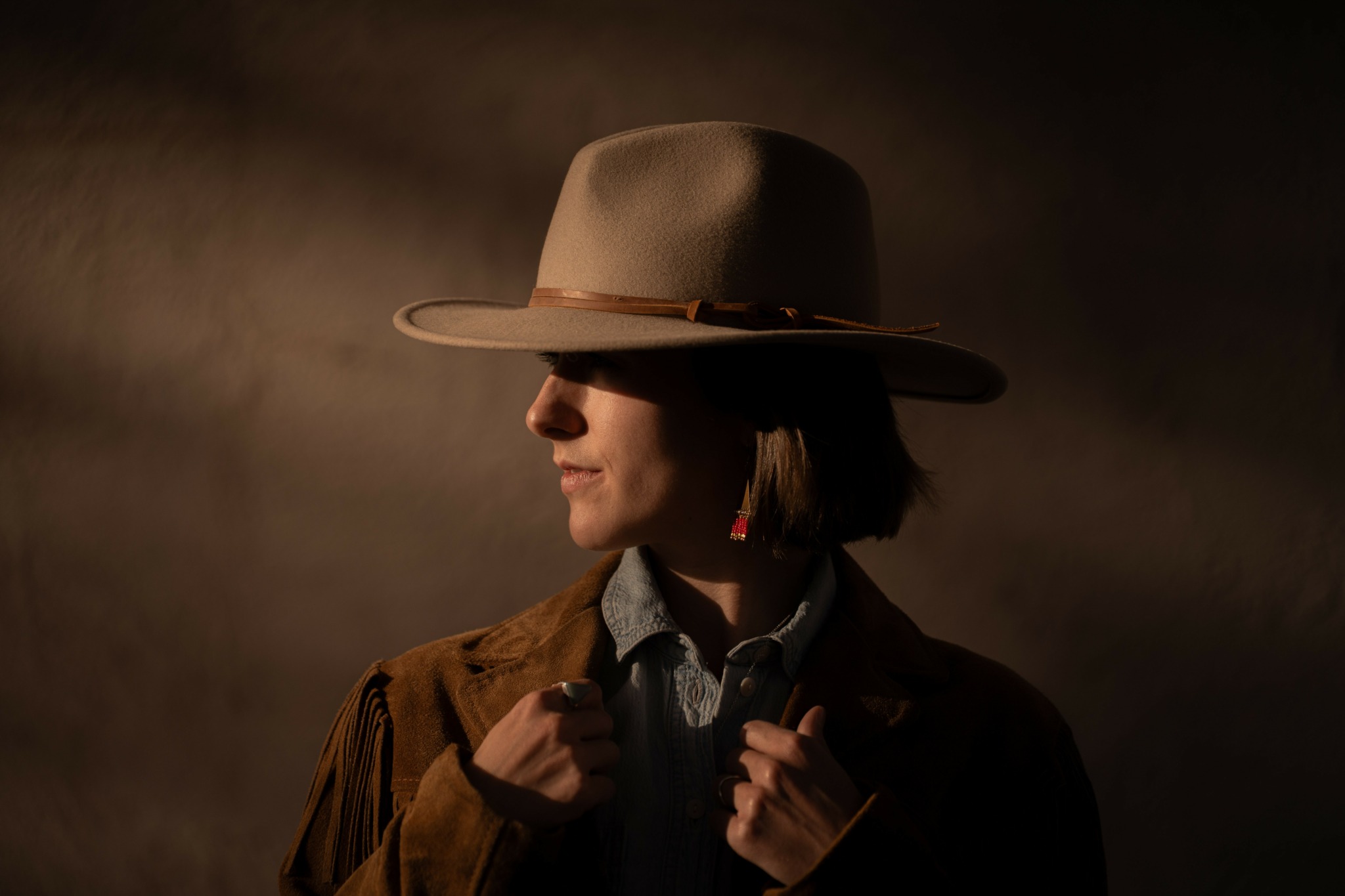We were lucky to catch up with Mel Olrich recently and have shared our conversation below.
Alright, Mel thanks for taking the time to share your stories and insights with us today. Learning the craft is often a unique journey from every creative – we’d love to hear about your journey and if knowing what you know now, you would have done anything differently to speed up the learning process.
I’m primarily a self-taught artist, and my learning process has been very organic and informal—filled with trial, error, and a lot of experimentation. I took a few art classes growing up and I don’t have an art degree. It was a bit daunting to know where to begin so I started by diving in with whatever materials I had, which for me was watercolors, and just playing around with it. In all honesty, those early stages were quite frustrating! However, over time, my style and technique developed as I observed other artists, sought feedback from my community, and continuously pushed myself to try new things. I don’t believe you have to be the most innately talented artist to learn and succeed. Art is a skill that takes countless hours to refine, gosh I’m still over here refining my skills and will continue to do so for the rest of my life! What’s essential is the desire and motivation to keep creating, practicing, and improving—while staying authentic and true to yourself.
In today’s world of social media, it can often feel like you’re sending your work out into a black hole, with little feedback or recognition. Every artist, creative, or small business owner knows how discouraging that can be. But I firmly believe the key to learning and succeeding is persistence. Keep creating, seek feedback, adjust your approach, and try again. Art is deeply personal and incredibly rewarding, but it also requires vulnerability, especially when turning it into a business. I’ve been incredibly fortunate to have a supportive network of family and friends who encouraged me when I felt like giving up. Early encouragement from fellow artists gave me the courage to put my art there and even apply to my first artisan market—those moments of validation from people who believed in me made a huge difference. Without that support, I doubt I would be where I am today or have the confidence to pursue this path.
Looking back, I suppose I could have accelerated my growth by seeking mentorship and more structured learning earlier. But, the best way to accelerate your learning process is embracing failure! Sometimes I’d be so worried my painting wouldn’t come out right that I wouldn’t even start. Let’s be real, I still get this way sometimes especially when I’m trying something new. It’s in that creative edge – when you’re trying to paint something that’s just outside your current skill level – where you learn the most. I’ve been finding myself more and more on this “creative edge” as my confidence grows and my desire to push the boundaries of what’s possible in my art deepens. This year, I’ve started experimenting with larger-scale paintings on wood panels—a big shift for me since I’ve spent the past few years working mostly on small paper pieces, well within my comfort zone. It’s been challenging, but the growth I’ve experienced in just the past few months has been tangible.
All in all, patience, perseverance, and staying open-minded have been my most important skills. Overcoming comparison and self-doubt has been a major challenge, but focusing on my unique path and trusting my vision has helped me keep moving forward.

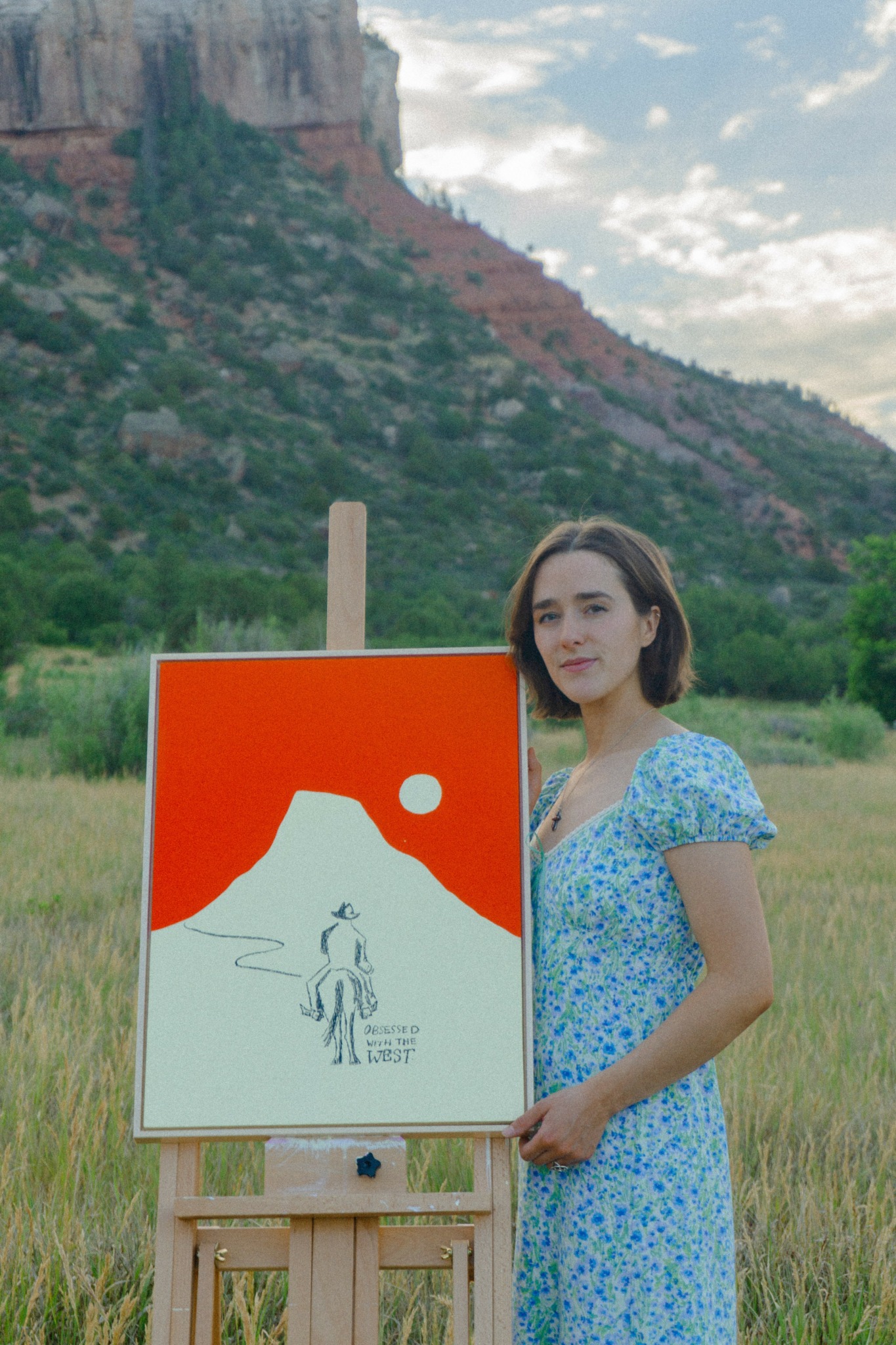
Great, appreciate you sharing that with us. Before we ask you to share more of your insights, can you take a moment to introduce yourself and how you got to where you are today to our readers.
Sure! I’m a mixed media, contemporary western painter and illustrator. My journey as an artist has been anything but linear—it’s been an organic and always evolving process. It all began when I was given a box of watercolor paints and supplies that belonged to my grandmother. At the time, I was living in Denver, fresh out of grad school, and navigating the uncertainty of the pandemic. Like many others, I turned to creative outlets for stress relief—and art quickly became a daily ritual. I started out creating watercolor mountain landscapes, inspired by the Rocky Mountains. These mountains were what I knew and what I missed during the lock downs. It felt grounding during that strange, isolating time.
As any artist will tell you, inspiration evolves. Over time, my style has expanded, and so have the subjects I am drawn to. Two years ago, my husband and I moved to Durango after living on the Front Range for several years— looking back, that move marks a major shift in my work. While the dramatic landscapes of the San Juans and the Four Corners region continue to fuel my creativity, I’ve become equally inspired by the quieter, everyday artifacts of the West: an old leather fringe jacket found at a thrift store, a worn pair of vintage cowgirl boots. Even my dog, Bandit, inspired an entire collection of salty cowboy dog illustrations (think the old western movies where a moody cowboy is smoking a cigarette).
I consider myself a self-taught and community-led artist. My style and techniques have developed through years of experimentation, curiosity, and—honestly—a lot of trial and error. I say “community-led” because I’ve been shaped by the support, encouragement, and inspiration of other artists and creatives I’ve met along the way. They’ve helped me grow, refine my voice, and believe in my work.
My art is rooted in real-life experience and personal connection. I paint only what I know and what I’ve seen, using my own reference materials, memories, and emotions as the foundation for every piece. Living in Southwest Colorado has deeply influenced this process. The culture, color, and spirit of the West are woven into my work—not just in subject matter, but in the feeling and rhythm of how each piece comes to life. My art connects me to my home, and my home continues to connect me back to my art. That relationship is at the heart of everything I create.
Currently, I’m working on a collection of larger-scale paintings that explore the spirit of the American West with a contemporary lens. This body of work is especially meaningful to me because it bridges the aesthetics of Western art with the realities of contemporary art and culture. I’m interested in how place, memory, and identity shape the stories we tell—and how visual art can honor the past while making space for new interpretations of what “the West” looks and feels like today.
Earlier this year, I changed my business name from Mountain Mel Designs to Mel K. Olrich Art to mark a new chapter in my creative journey. It felt like a natural evolution—a way to align more fully with the artist I’ve become and the direction my work is headed. This shift gives me room to keep growing, experimenting, and evolving in ways I may not even be able to name yet—and that’s the most exciting part. There’s so much I’m still discovering about myself, my process, and the stories I want to tell through my art.
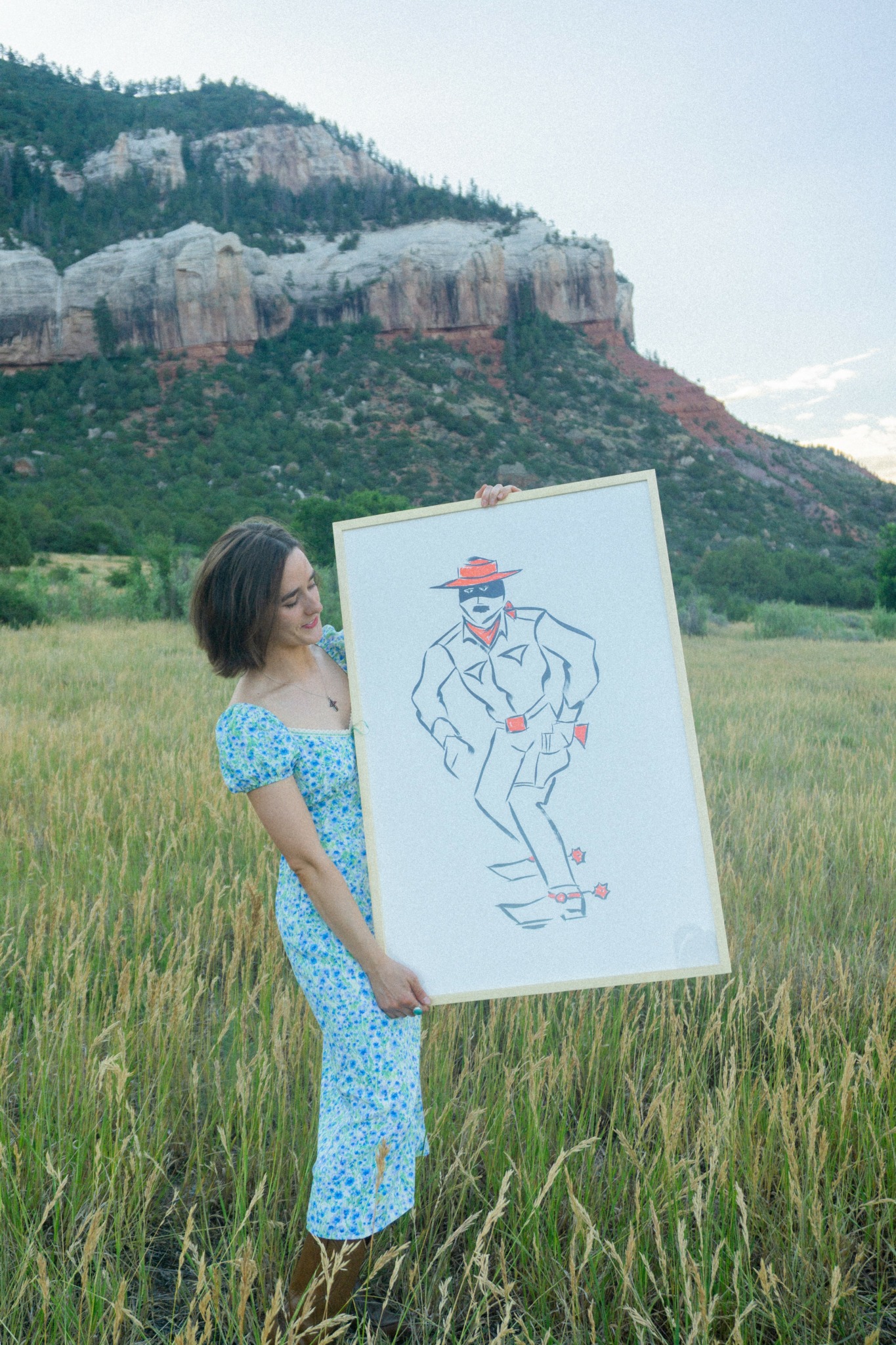
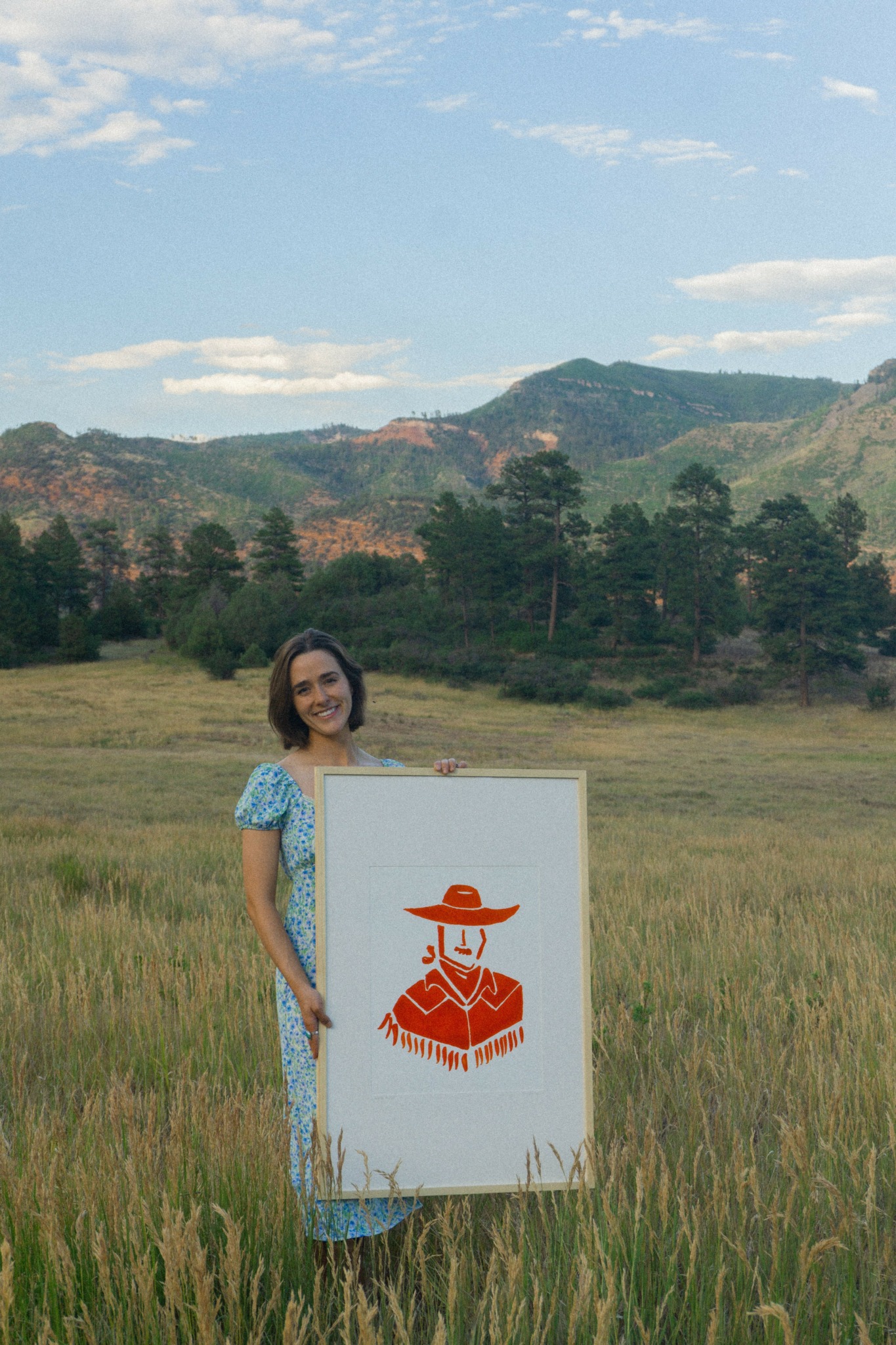
For you, what’s the most rewarding aspect of being a creative?
For me, the most rewarding aspect of being an artist is finding joy in the creative process. Not only do I love the process of creating the artwork itself, nothing is more satisfying than crafting and telling a cohesive story around that piece using graphics, photography and writing. There’s something so incredibly fulfilling about taking a creative idea, bringing it to life, and then having the courage to share it with the world. No matter what happens after that moment, the real growth—and connection—comes from showing up again and again. That resilience is what makes this journey worthwhile.
Every artist’s path is unique, and I’ve learned how important it is not to fall into the trap of comparison. I remind myself regularly that true success isn’t just about the end result or even making a bunch of money—it’s about loving the act of making, experimenting, and creating, even when it feels scary or uncertain. And because of that, artists are some of the hardest working, most dedicated people I know. While my business started as a very organic and non-intentional process, I now approach it with more purpose and intention. On a practical level, I’m building a career that supports my family and allows me the flexibility to live in a way that feels authentic to me. But on a deeper level, it’s about self-fulfillment—creating, reaching milestones, and embracing the challenges that come with growing a business and a creative practice.
The biggest lesson I’ve learned along the way is patience. In a world of instant gratification, I’ve had to cultivate the willingness to put in the work without seeing immediate results – both in the ability to bring a vision to life and the process of growing a business. Trusting that good things take time has been key. “Slow growth is good growth” has become one of my mantras, and I’ve even incorporated it into some of my recent work as a form of meditation and positive affirmation for others. In the end, the most rewarding part is this ongoing cycle of creation, growth, and connection—both with my art and with the community that supports it.
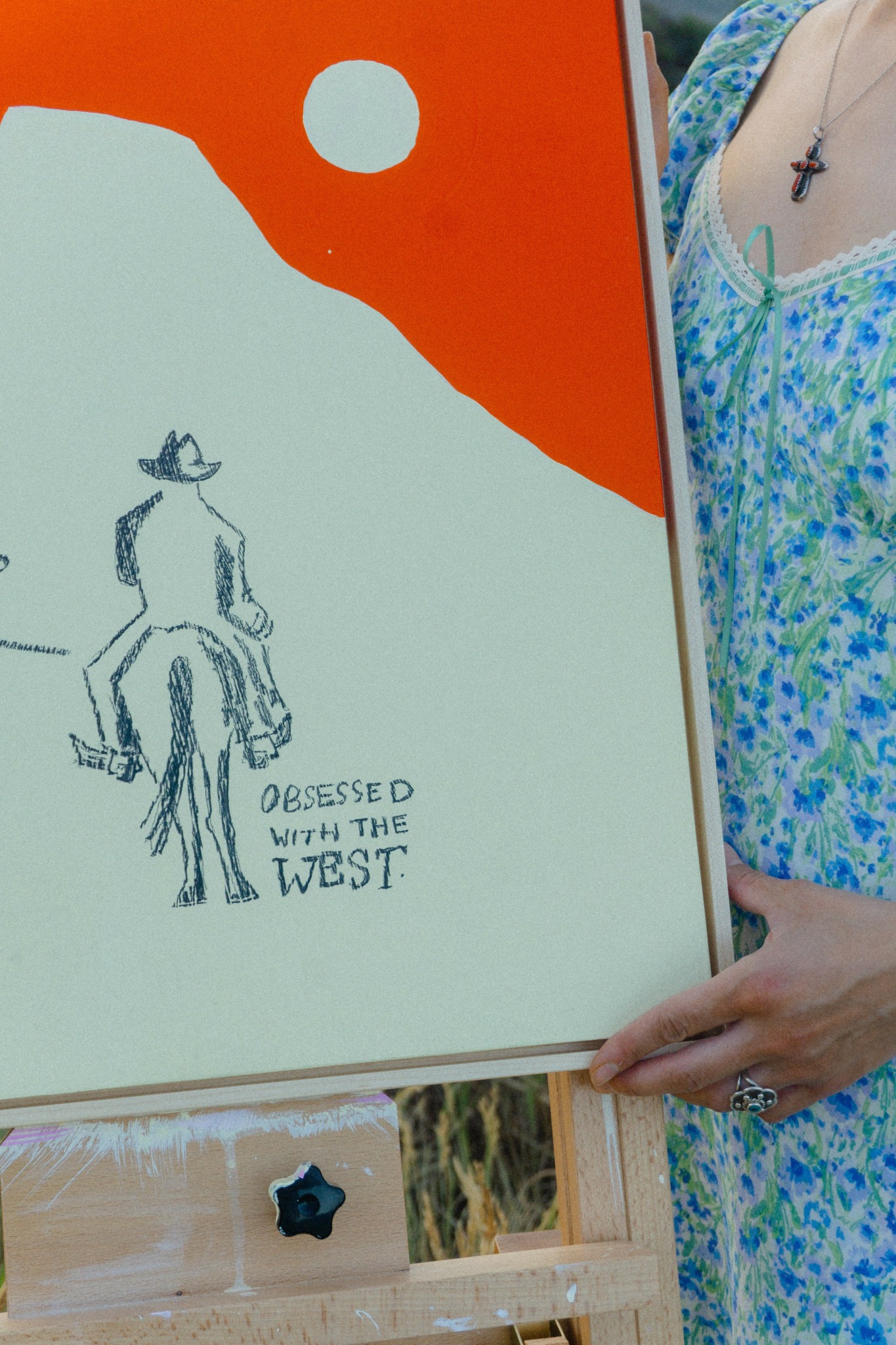
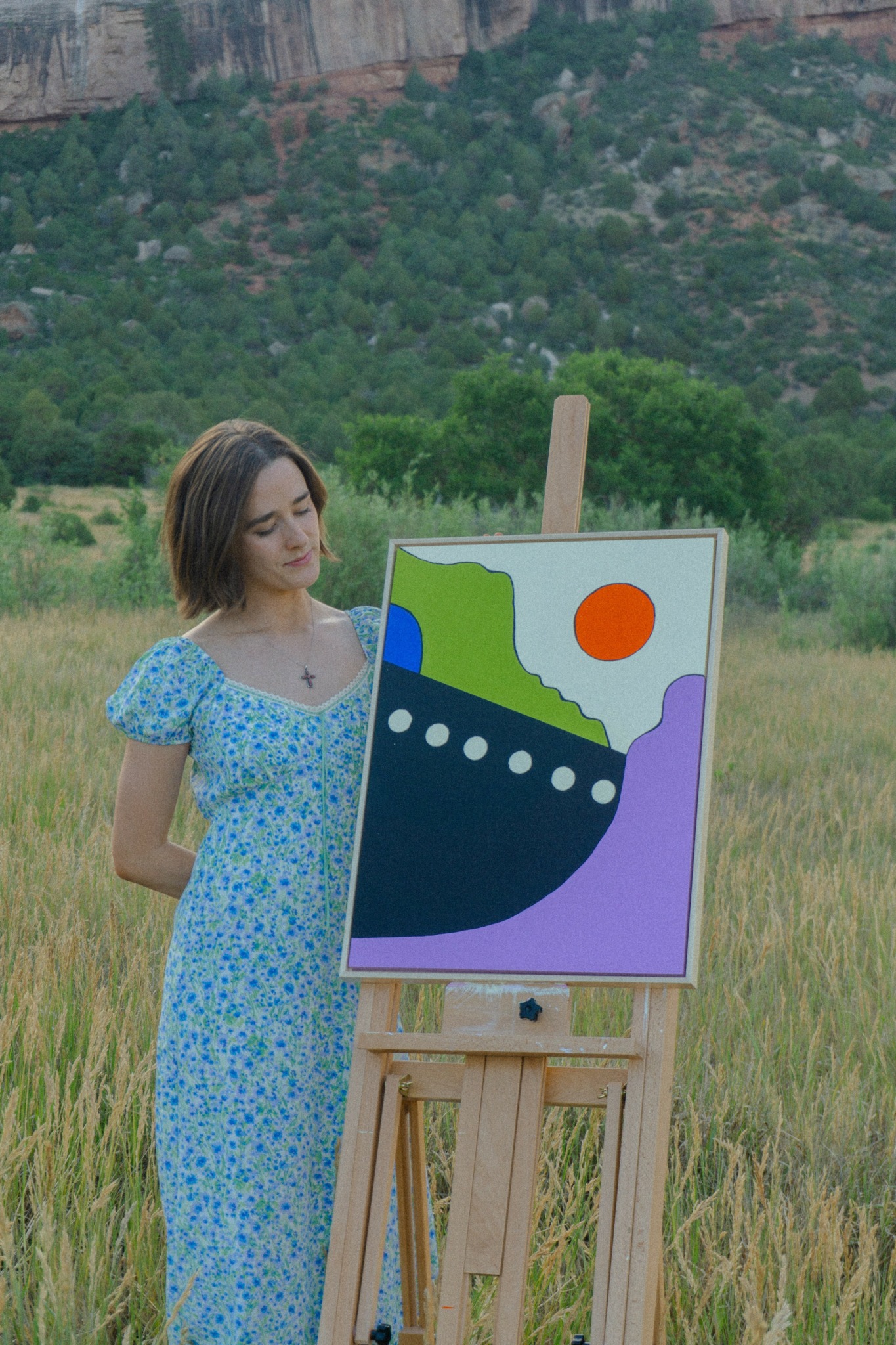
Can you tell us about a time you’ve had to pivot?
I’ve always loved art and have enjoyed painting, drawing, and design my whole life. However, I never really considered art as an actual career option. I was good at school so I was always told that I could “do anything”, which almost always means something in the math/science realm – like an engineer or health care. You know the drill, because how many adults actually encourage young people to become artists? So I thought, that seems like a logical choice. I’m good at school and am passionate about healthy living, so I’ll go into health care and become a physical therapist. Which is what I did. I graduated from Regis University with a Doctorate in Physical Therapy in the lovely year of 2020. Ironically, it was really hard to find a job in healthcare at that time because many clinics and hospitals were on a hiring freeze during the pandemic. I wasn’t able to find a job for 6 months and as I’ve mentioned previously, I turned to my lifelong hobby of art and found comfort in a rather stressful time. I even decided to make a separate art instagram and figured, why not start an Etsy and sell handmade cards and things like that? Well, one thing led to another and I began to connect with other artists over social media and at artisan markets. They inspired me and some even helped me dip my toes in markets. From there, it’s been a very organic process of building and growing my business in a way that has felt right for me, while still working part time as a physical therapist. I’m pretty sure people think I’m crazy, sometimes I think I’m crazy for not pouring into my career as a physical therapist full time. But burnout in health care is real and I decided very early on in my career that life is too short to live out my days feeling exhausted and depleted.
In sharing my story, I hope it encourages those whose lives have taken an unexpected turn in careers, passions, or even priorities. It’s hard to grapple with these types of shifts, especially when you’ve poured so much of yourself into one thing, only to find something entirely different waiting around the corner. I often think about the path I’ve taken by going to school for physical therapy, investing that time (and money!) only to turn to art after graduating from my program. I still work part time as a PT, which I enjoy and find meaning in, but I know now that an essential part of me also needs to create and express myself through art. Acknowledging and accepting this has opened doors I never imagined and led to friendships I never would have had. It’s okay for our dreams to evolve and for our identities to shift. If you have an idea or a dream you can’t let go of – trust it, follow it. The best part is you don’t have to have it all figured out to take the first step, I’m learning and growing all the time which makes it that much more exciting!
Contact Info:
- Website: https://www.melkolrichart.com
- Instagram: @melkolrichart
- Facebook: https://www.facebook.com/melkolrichart/
- Other: Pinterest: https://www.pinterest.com/melkolrichart/
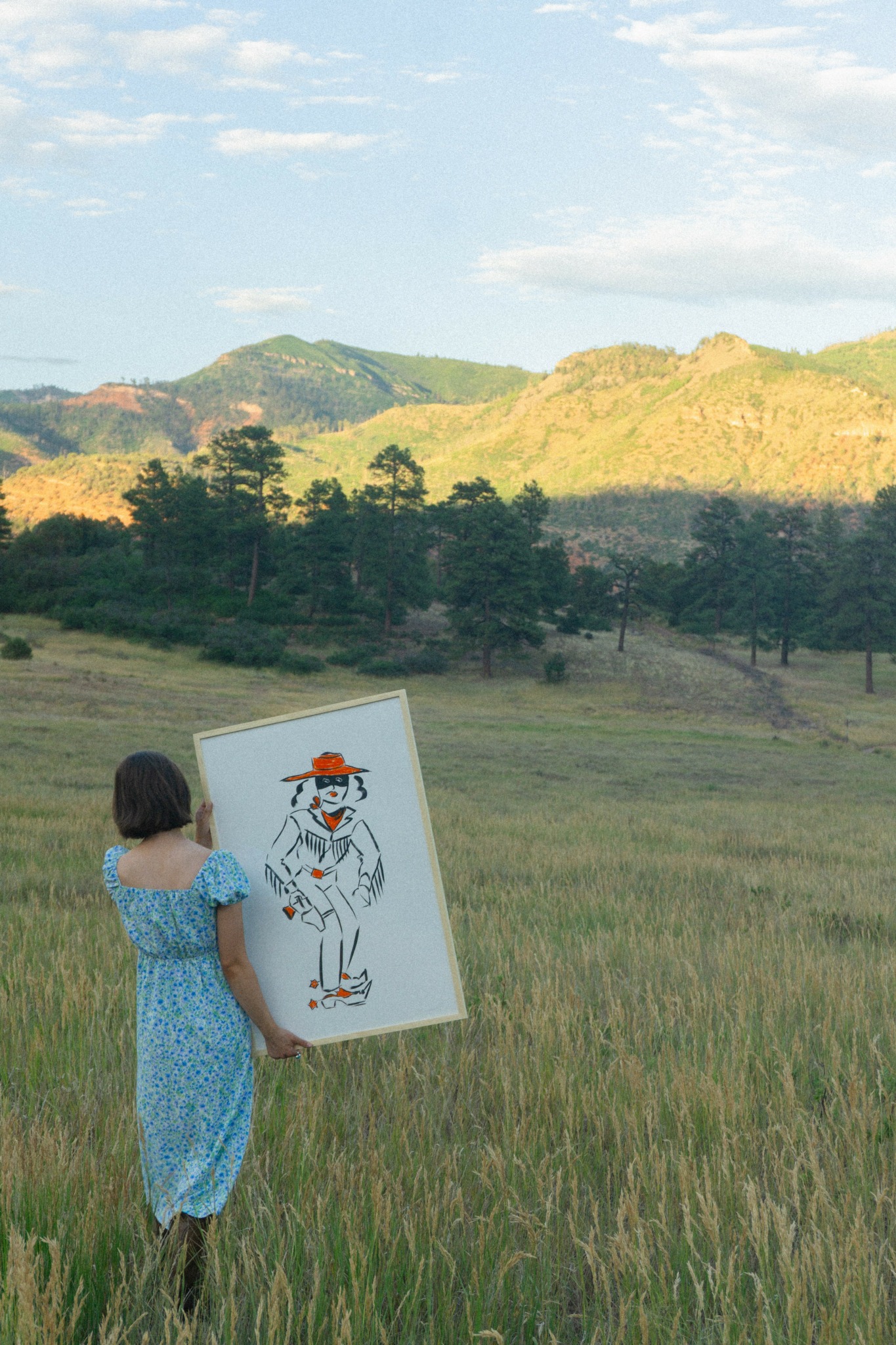
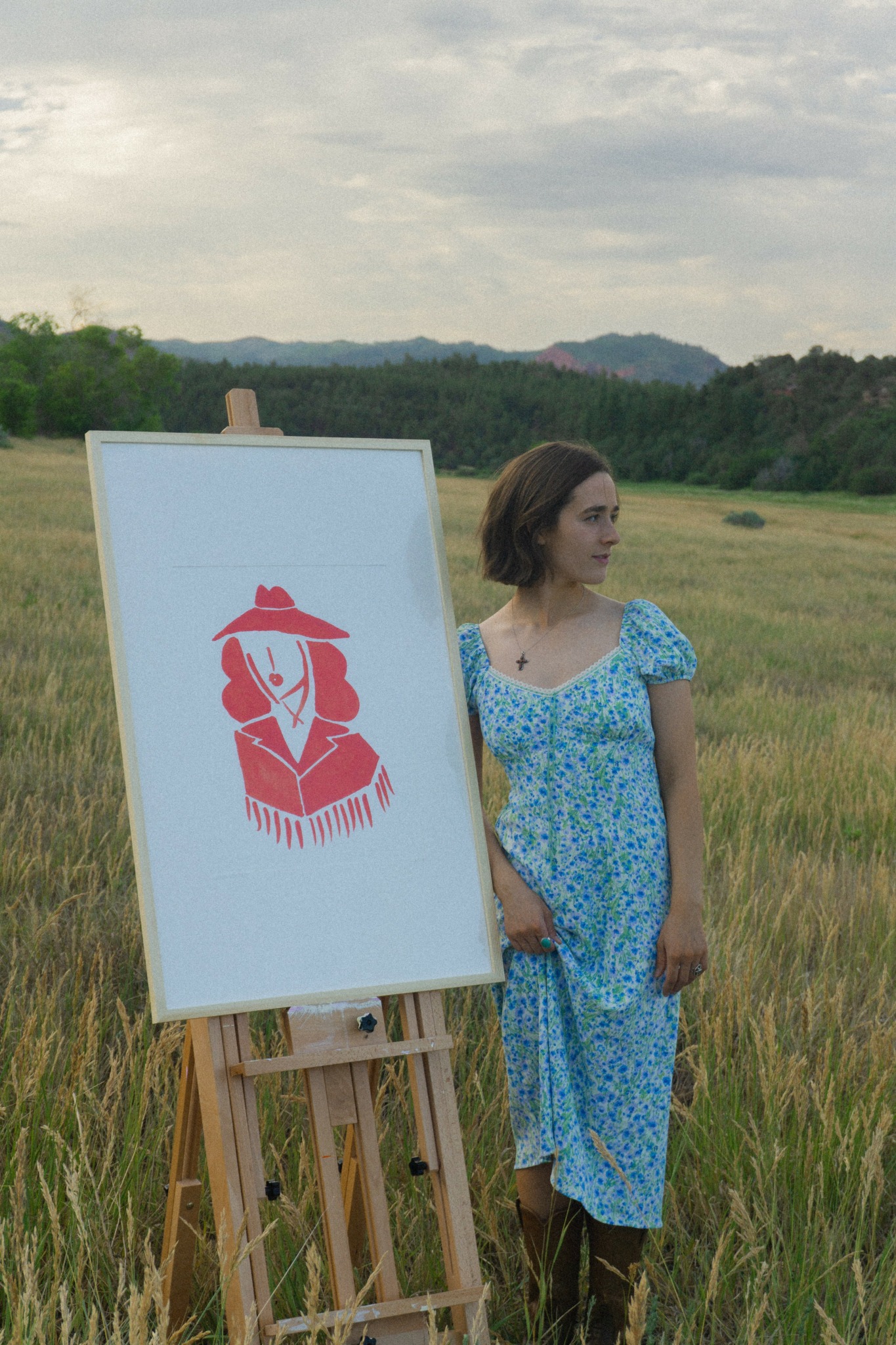
Image Credits
Headshot/personal photo – Sydney Smolla


